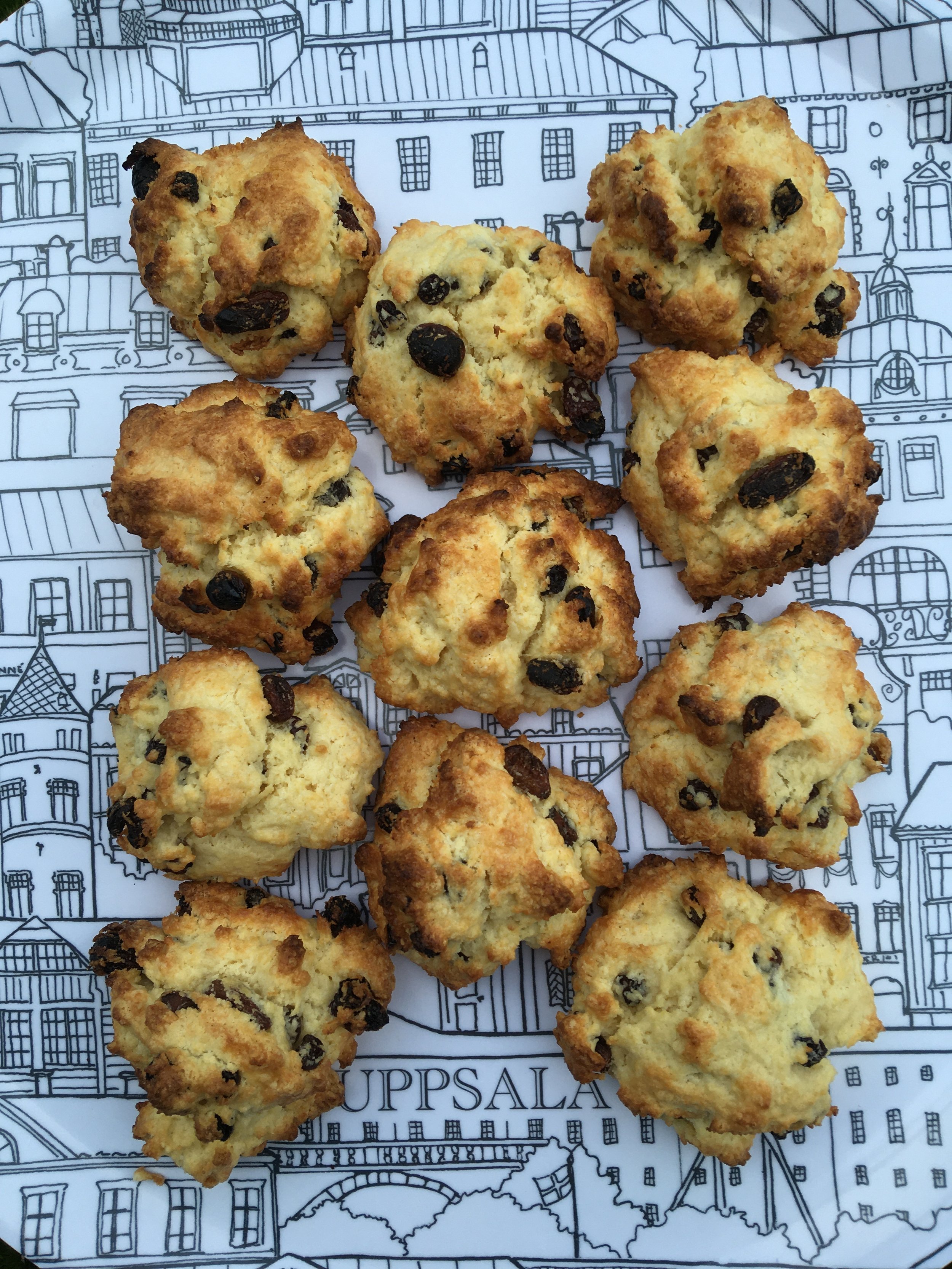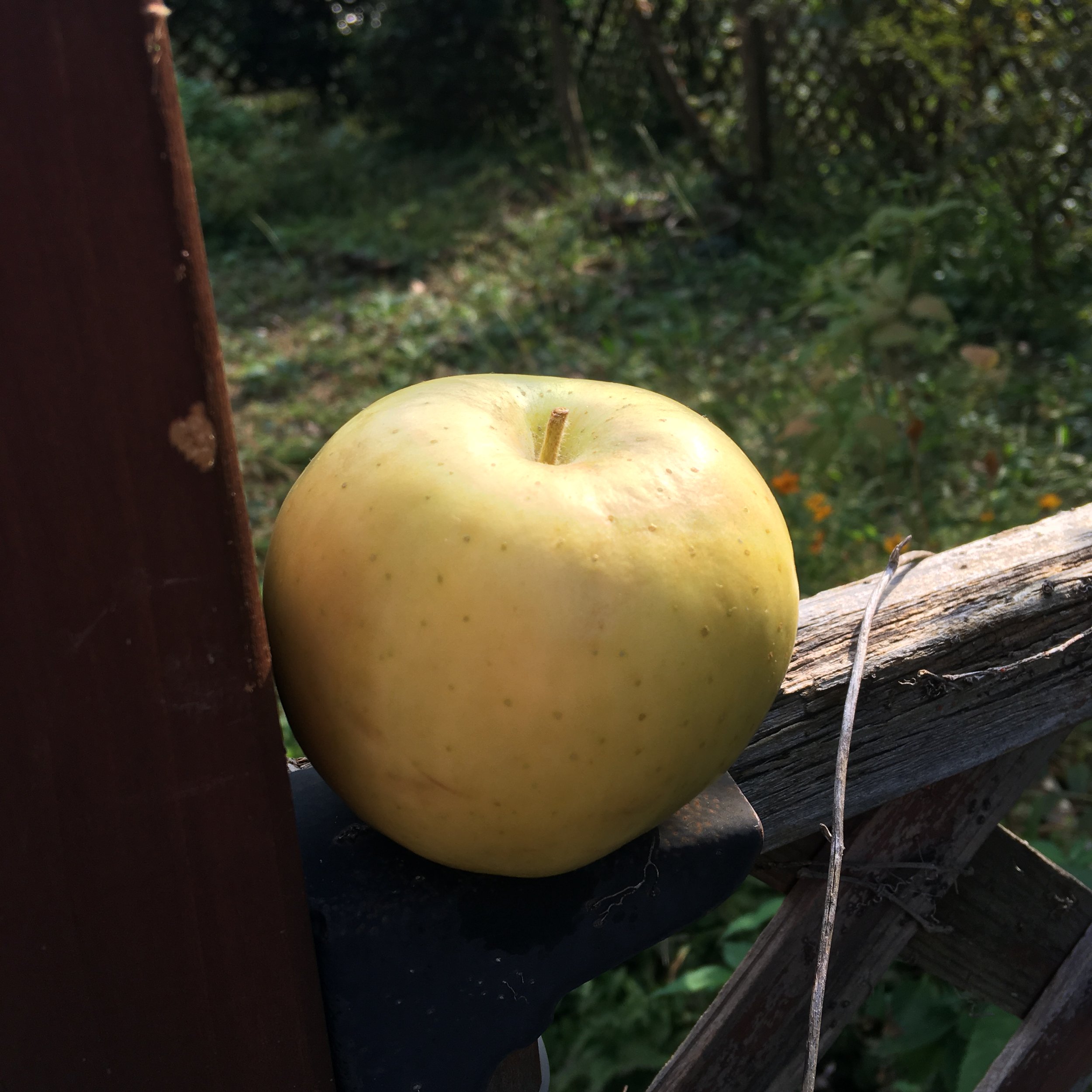And here we are at last, in the final chapter of Agatha’s autobiography. The chapters do not balance according to the time passed, as she herself acknowledges in the opening sentences: “I am writing this in 1965. And that was in 1945. Twenty years, but it does not seem like twenty years.” Indeed, this period is raced through—perhaps because contentment and steady success do not a fascinating story make, and who knew that better than an author of murder mysteries? …
Read moreWhat Agatha Ate #10: The Second War
Just like food references were thin, except by deprivation, in Agatha’s account of the First World War, so they are again in this chapter, on the Second. It’s no surprise, thought, that when references do appear, they are heavily freighted with significance.
Since Agatha was always a great lover of apples, the following anecdote is worth excerpting, from a period when various of Agatha’s houses were occupied by the military and government for the war effort…
Read moreWhat Agatha Ate #9: Life with Max
Considering the correlating role of food with romance in Agatha’s autobiography, should we be surprised that this chapter begins with happy food memories? Of course not!
They are on their honeymoon in the Balkans, and at a complete linguistic loss. “We had enormous fun with the menus there. They were written in Yugoslavian [!], and of course we had no idea what they meant. We used to point to some entry and then wait with some anxiety to see what would be delivered. Sometimes it was a colossal dish of chicken, on another occasion poached eggs in a highly seasoned white sauce, another time again a sort of super-goulash.”
Later they took a boat from Yugoslavia to Greece, which surprisingly enough had fabulous eats. “Never have I tasted such food as we had on that boat: delicious lamb, very tender, in little cutlets, succulent vegetables, rice, sumptuous sauce, and savoury things on skewers.”
Unfortunately, the honeymoon ended in alimentary disaster…
Read moreWhat Agatha Ate #8: Second Spring
This fittingly titled chapter walks us through the treks to the Near East that gave Agatha a new lease on life—and a new marriage. If her sheer doggedness in recovering from emotional betrayal, or unsurpassed publishing record, is not enough to inspire your respect, then the amount of physical misery she voluntarily endured for the sake of adventure ought to do it.
Accordingly, the discussions of food in the first half of this chapter have largely to do with their uninspiring nature…
Read moreWhat Agatha Ate #7: The Land of Lost Content
This is the chapter of unhappy, unsettled men. It starts with Monty, Agatha’s ne’er-do-well brother, invalided out from his life of African adventure. Settling down to domestic tranquility in England did not suit him in the slightest. Living again with his mother in Ashfield, he would demand the servants prepare “chops and steaks” for him whenever he felt like eating—even if that happened to be at four in the morning.
Eventually they got him into the care of a widow with thirteen children, Mrs. Taylor, who knew how to handle a man like Monty. She cooked him delicious meals and grew a garden of “peas, new potatoes and French beans.” Monty liked her well enough to stop with the four a.m. calls for steak.
And that is the end of food references in this chapter, which gives way to the crumbling of her marriage to Archie…
Read moreWhat Agatha Ate #6: Round the World
In this chapter Agatha details her and Archie’s year-long, round-the-world tour with the quasi-charlatan Belcher. There’s a lot about the landscape and a lot about surfing, though rather less about food than you might expect.
The only thing she recalls of South Arica was “having iced lemonades.” Melbourne’s cuisine is remembered as chiefly “incredibly tough beef or turkey.” New South Wales stands out for “Ripe oranges plucked straight from the trees… the most delicious things you can imagine,” but she was disappointed to see how pineapples grow, like a field of cabbages. Another stop in Australia featured cocoa and coffee.
The most memorable item from New Zealand was not anything on the menu, but how they “fell into the clutches of a man known to us all as ‘The Dehydrator.’” No, not a super-villain who desecrates corpses, but an entrepreneur who wanted to figure out how to dehydrate, package, and sell every kind of food. “We were given dehydrated carrots, plums, everything—all, without exception, tasted of nothing.” Even Belcher had to tame his tantrums and endure “dehydrated carrots and potatoes”…
Read moreWhat Agatha Ate #5: War
This chapter deals with the formative years of Agatha’s adulthood, including her abrupt wartime marriage to Archie after a lot of on-again-off-again, training and working as both nurse and pharmacist, and eventually establishing herself as a housewife and an author.
She vividly describes the shock of learning to nurse wounded and dying soldiers, but also how canny she had to get, and quick. “[I]n a month or so I was quite adept at looking out for their various tricks,” as when a soldier claimed that the doctor had prescribed him a diet prominently featuring port wine!
Though married now, Agatha continued to live at home in Ashfield with her mother while Archie was gone for long tours of duty with the brand-new Air Force. During this time, her elderly Grannie, no longer able to care for herself, came to live with them. Just how unable she was to take care of herself became clear when they undertook the herculean task of emptying out her house at Ealing. The tragic specter of spoiled food pointed not only to Grannie’s growing dementia but also to the desperate search for foodstuffs in wartime. “Jams that had gone mouldy, plums that had fermented, even packets of butter and sugar which had slipped down behind things and been nibbled by mice… vast monuments of waste! I think that is what hurt her so much: the waste.”
Not to worry: some good things did survive. “Here were her home-made liqueurs—they at least, owing to the saving quality of alcohol, were in good condition. Thirty-six demijohns of cherry brandy, cherry gin, damson gin, damson brandy, and the rest of if, went off in the furniture van. On arrival there were only thirty-one. ‘And to think,’ said Grannie, ‘those men said they were all teetotallers!’” They’d have done better if they were in fact teetotallers who resold their absconded goods on the black market—financially, anyway, if not morally…
Read moreWhat Agatha Ate #4: Flirting, Courting, Banns Up, Marriage
A highly fitting topic for the day before Valentine’s Day!
It’s slim pickin’s for my purposes in this chapter, especially compared to the last one. There’s a lot more about clothes and young men than food, which seems entirely fitting for the shift of childhood interests to those of a young woman. But for all that, we do get a couple glimpses into Agatha’s appetite.
For one, her ferocious love of sweets survived adolescence. She relays a particularly comical story about sightseeing in Florence, being urged by a chaperone that she really must see a painting of St. Catherine before she returns to England the next day. They race around the Uffizi looking for it. But all the while “my anxiety was mounting. Would we have time to go to the patisserie and have a final delicious meal of chocolate and whipped cream, and sumptuous gateaux?” Well, it turns out the painting wasn’t in residence at the moment after all, so there was after all “just enough time to stuff me with chocolate and cakes before catching our train,” the cakes generously endowed with “cream and coffee icing.” Now that’s a happy memory of Florence…
Read moreWhat Agatha Ate #3: Growing Up
The turning point that launches this third chapter of Agatha Christie’s autobiography is the death of her beloved father—and the ensuing discovery that there was not nearly as much money left over as anyone thought. That meant a lot of changes, not least of all in the household budget.
Not that Jane the cook accepted this new state of affairs…
Read moreWhat Agatha Ate #2: “Girls and Boys Come Out to Play”
This second chapter of Agatha’s autobiography is considerably thinner on food references than the first.
That surprised me to realize, since she spends a fair amount of it in France, but I guess the food did not make such an impression on her English tastebuds. Her most vivid memory seems to be how a French waiter “used to carve us the most glorious mice out of radishes.” She also recalls how at a spa they had to drink “glasses of nasty water.” Her only real treat was sucre d’orge—literally barley sugar, but probably consumed in the form of a candy cane—while her mother indulged in aniseed, “which I could not bear.”
A fonder memory is of garden parties, which she deduces to have taken place in August since strawberries and cream were never on the menu…
Read more








